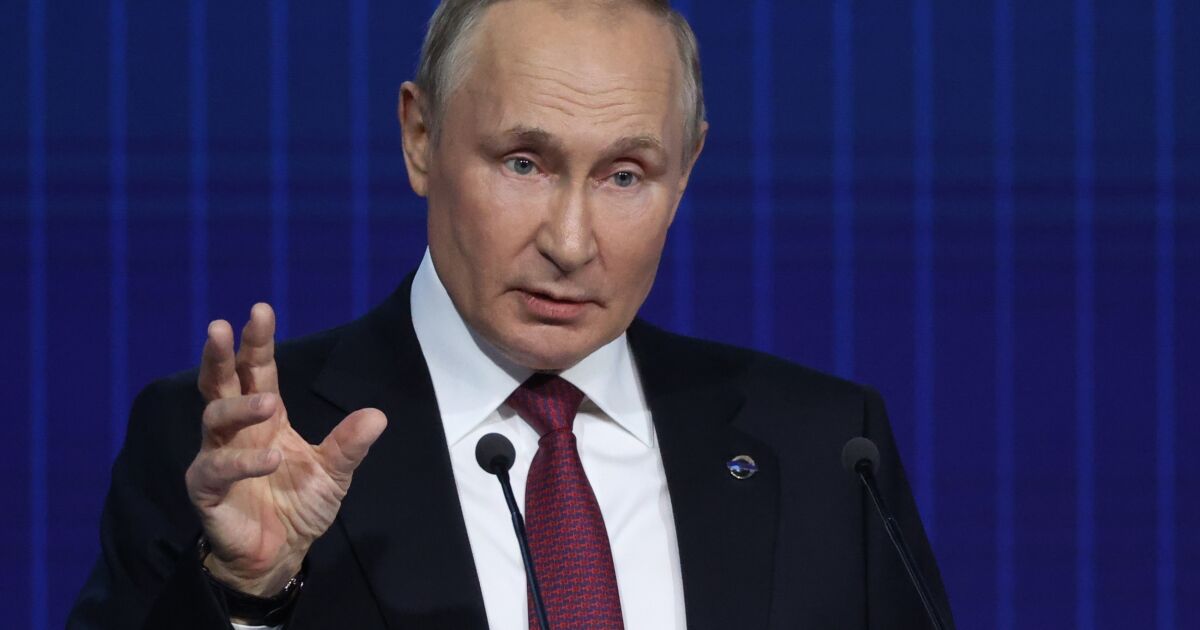In a newly released defense strategy plan, the Biden administration says China remains the most dangerous security threat to the U.S. but that “for the first time,” Washington faces two possible nuclear conflicts with that country and Russia. The review released Thursday will guide the future size and shape of the U.S. armed forces.
Russian President Vladimir Putin has repeatedly raised the specter of using nuclear weapons to attack Ukraine, the neighboring country his forces invaded eight months ago.
While the threat has alarmed governments around the world, U.S. defense officials say they have not seen signs that Putin is about to deploy a nuclear device. But the threat is being taken seriously at a time when global tensions are at a boiling point, senior Pentagon officials said Thursday.
“Russia’s invasion of Ukraine is a stark reminder of nuclear risk in contemporary conflict, and China’s nuclear modernization and its rapid expansion presents us with new risks and uncertainties,” a senior Defense Department official said.
Secretary of Defense Lloyd J. Austin III and other department officials spoke to reporters upon the release of new major documents that form the backbone of U.S. military policy: the National Defense Strategy, the Nuclear Posture Review and the Missile Defense Review.
China remains the most formidable adversary because it is a powerful country that can systematically challenge the U.S. on military, economic, technological and diplomatic fronts, the assessments conclude. Russia, though a nation in decline, has intensified the risks it poses by building up its nuclear program and reportedly receiving weapons from Iran.
“For the first time, we’ll have to deter two major nuclear arm competitors, both China and Russia,” the Defense official said, speaking anonymously in a briefing ahead of the formal release of the reports. “This presents new dilemmas for both strategic deterrence and for regional warfighting.”
While the officials did not provide many details on what beefed-up deterrence would look like, it is expected to include the “forward” placement of more U.S. troops in eastern NATO countries, enhanced cyber security measures, development of a hypersonics program and modernization of the aging U.S. fleet of long-range bomber aircraft, and missile-launching ground and submarine systems.
“It cannot be a solution where if China has 1,000 and Russia has 1,000, then we need 2000,” the official said. “Because that is an arms race that nobody should want to be in.”
The review also formally canceled the sea-launched cruise missile program, deeming it no longer necessary.
In the strategy documents, the U.S. labels China as “the pacing threat,” citing its “coercive and increasingly aggressive endeavor to refashion the Indo-Pacific region and the international system to suit its interests and authoritarian preferences.” This includes belligerent actions and territorial claims in the South China Sea and threats to seize the self-governing island of Taiwan.
China is also an ally of another menacing nuclear-armed state, North Korea, which has launched numerous ballistic missile tests in recent months.
Yet it was Putin who continued to rattle nerves — or at least saber — on Thursday. In a three-and-a-half-hour speech and question-and-answer session, he evinced confidence over the war in Ukraine and the need to defeat the West.
“The historical period of the West’s undivided dominance over world affairs is coming to an end,” Putin said, according to news reports. “We are standing at a historical frontier: Ahead is probably the most dangerous, unpredictable and, at the same time, important decade since the end of World War II.”
Putin has also insisted, without evidence, that Ukraine is preparing to launch a “dirty bomb” that would spread radioactive material across its territory and then would blame Russia for the attack. Western leaders warn it is more likely that Russia would use a dirty bomb in a false-flag operation.
Speaking at a news conference at the Pentagon, Austin said he hoped that open channels of communication would help avoid escalation but warned that if Russia uses any nuclear weapon — including a slightly less destructive “tactical nuclear weapon” — it would face “a very significant response” from the rest of the world.
“We’re going to continue to communicate that any type of use of a weapon of that sort or even the talk of the use of a weapon of that sort is dangerous and irresponsible,” Austin said.

